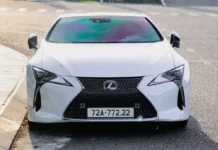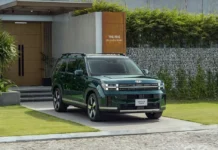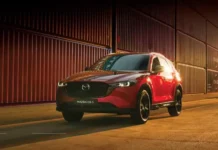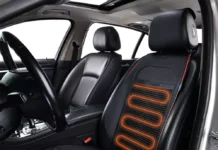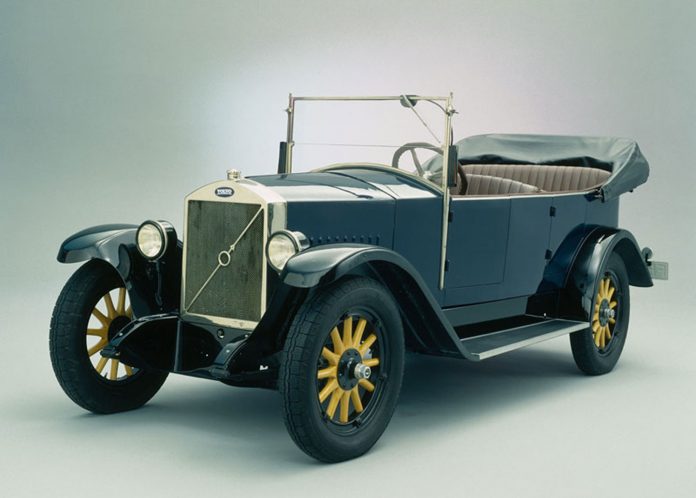Although standing alongside Mercedes, BMW, Cadillac, and Lexus in the luxury brand group, Volvo is less known due to its commercial lack of success. Besides weak business performance, Volvo also faces obstacles with its rigid and unappealing design that does not appeal to the younger generation.
However, when it comes to safety, no manufacturer can surpass the Swedish carmaker. In its 90-year history, Volvo has always been at the forefront of passenger protection, possessing the most advanced technologies and making safety its guiding principle.
In 1927, Volvo made a name for itself with the first-ever safety windshield in the world. When a collision occurs, it shatters into small fragments instead of large pieces, thus not causing any injury to the driver. 17 years later, in 1944, Volvo continued to innovate by inventing the multi-layer windshield. A layer of plastic acts as a linker between the two glass layers and holds the shattered pieces together, preventing them from being thrown out. This technology ensures the safety of the passengers and helps the driver maintain control of the steering wheel in the event of a collision.
The multi-layer windshield is now a mandatory standard in all car models. However, Volvo has been using it in most of its products for the past 25 years.
Next, in 1959, Volvo once again became a pioneer by equipping its cars with 3-point safety belts. Despite various designs, all car manufacturers eventually adopted Volvo’s invention as the standard safety equipment. In 1964, Volvo developed the rear-facing child seat.
The milestones mentioned above cannot compare to Volvo’s decision to establish the car accident investigation team in 1970. Members of this team can use Volvo cars as test objects to evaluate safety and crash resistance. The data obtained from these tests is used to design safer Volvo cars and develop superior safety technologies.
Another milestone in Volvo’s safety journey was in 1984 when the Swedish automaker boldly equipped ABS (Anti-lock Braking System) on all its products, while many other companies were still skeptical. The fact proved Volvo right, and ABS eventually became an indispensable technology in modern cars.
In 1986, Volvo became the first car manufacturer in the world to use the center-mounted brake light. The improvements in safety belts and child seats continued, and in 1991, the 960 model introduced the first-ever 3-point safety belt in the middle seat of the rear row and integrated child safety cushions on the center armrest.
Also in 1991, the Side Impact Protection System (SIPS) was applied for the first time to Volvo’s 940/960 and 850 models. This system redirects the impact forces from both sides into the car’s strong safety cage. This feature is still missing from some car manufacturers’ models.
To complement SIPS, in 1995 Volvo became the first company to introduce SIP (Side Impact Protection) airbags, considering it a standard feature in all its 1996 models. In 1998, Volvo introduced head airbags as standard equipment. Objective tests have shown a 40% reduction in the risk of death in side impacts and a 55% reduction in head and brain injuries in rollover situations. In 1998, Volvo introduced the WHIPS (Whiplash Protection System), a safety device to prevent passenger injury in the front seats.
In 2004, Volvo introduced the BLIS system to detect blind spots with a sensor mounted on the side mirrors and alert the driver with a light. Also in that year, Volvo equipped its cars with daytime running lights.
In 2006, the PCC (Personal Car Communication) remote control became an optional feature on the new Volvo S80. With PCC, drivers can check the security level and whether the car alarm is activated before getting inside the vehicle. In addition, the heart rate sensor warns of an intruder hiding in the car. The Volvo S80 was also the first car to be equipped with Adaptive Cruise Control (ACC), collision warning, and emergency assistance.
“No one will die in a Volvo by 2020” – This somewhat crazy idea was proclaimed by Lex Kerssemakers, CEO of Volvo North America, in 2007. However, nearly a decade after that lofty commitment, Volvo is on track to create the safest car in history.
In fact, this statement from the Swedish carmaker is not an exaggeration or a PR stunt. According to impressive data from the company, it is clear that Volvo is a rare brand that always pays deep attention to the safety index of each finished vehicle. From 2009 to 2012, there was only one passenger death in a Volvo XC90. This model also scored 100% in terms of safety assistance technology, 97% in adult occupant protection, and achieved the highest overall safety score in 2015, as evaluated by the Euro NCAP.
To turn the promise into reality by 2020, Volvo will follow three steps. First, it must ensure maximum safety for users in the event of a collision. Secondly, the company will actively develop modern technologies to prevent accidents, including autonomous driving technology, driver assistance, and collision avoidance systems. Finally, Volvo will integrate these advancements into its self-driving vehicle lineup set to be unveiled in 2020.
Staying true to its user-centric approach, Volvo is poised to make a new breakthrough in the mission to reduce traffic accidents.
– Khánh An (Trithucthoidai)






